Download the graphs for this feature.
From somewhere in the distance comes the sound of shovels being readied and pencils being sharpened, as contractors prepare for the start of work on High
Speed 2. With the parliamentary process under way, the UK is on the cusp of building a new north-south main line for the first time in a century.
However, long before any ceremonial sods are turned, authorities along the route have begun to prepare for HS2’s impact. South Yorkshire councils and Leeds City Council have become enthusiastic champions of the project, lobbying hard for their voices to be heard in the design process. They believe benefits can be won - and lost - in the details of connectivity and precise routing.
Doncaster, while not on the line, fought to be the co-host of the new National College for High Speed Rail, training the next generation of engineers. This could welcome students by 2017, just as those shovels hit the ground.
Birmingham will host not only the other part of the college, but also the national construction headquarters (expected to generate 1,500 jobs by itself). In a study published on December 1, international real estate advisor Savills said that improved connectivity brought about by HS2, and the impetus for change this represents, has the potential to reshape the city.
“Birmingham’s time has come both politically and economically,” says Barry Allen, head of Savills’ Birmingham office. “New businesses are already recognising what the city has to offer, and both domestic and international investors are actively seeking opportunities to buy into the development potential. But if the city is to capitalise on the game-changing opportunity HS2 represents, we need a co-ordinated approach that brings together city council and business interests in working towards 2026, when HS2 is scheduled to begin operation.”
The area will, of course, be first to receive high-speed trains from the capital, but the Local Enterprise Partnership (Greater Birmingham and Solihull) isn’t waiting for the arrivals board to light up. Just as Savills has called for, the LEP has published a detailed strategy for how it intends to capitalise on the benefits. Furthermore, it claims those benefits have already begun to flow, with businesses already moving to the city and wider area, citing HS2 as a major influence in their decision.
LEP Chairman Andy Street sums up its position: “The arrival of HS2 in the Midlands is a once-in-a-generation opportunity to do something really special. It’s not enough to simply lay tracks and build stations - we must take this chance to create a legacy for the region in terms of regeneration, jobs, skills, economic development and connectivity. We can use the benefits of HS2 to play an even greater role in powering Britain.”
Looking at the bare facts, HS2 seems to have already dealt Birmingham a strong hand. The railway will enter the city from the southeast, trains pausing at an interchange station close to the National Exhibition Centre and Airport, and to where the M42 meets the M6. The line then heads north to reach a triangular junction - one leg heads further north for Leeds and Manchester, the other turns left and follows the M6 into Birmingham itself.
The Curzon Street terminus site is close to Moor Street and Snow Hill stations, and ten minutes walk from the city’s newly refurbished New Street station. On its way to the terminus the railway passes Washwood Heath, where a major depot and the network’s national command and control centre will be located.
So that’s two stations (with the benefit of one being ‘parkway style’ and the other in the city centre), a depot, a control centre, a college and the construction headquarters. Even so, the Local Enterprise Partnership is not taking anything for granted. Its strategy document (a response to the HS2 Growth Task Force of March 2014) is an impressive piece of work, as are the figures trumpeted in the introduction.
It estimates that HS2 will create 104,000 new and safeguarded jobs in the area, 10% of them created for local, unemployed residents. There will be 2,000 apprenticeships, with a prediction that up to 36% of the local population will be qualified to NVQ Level 4+. Overall, it is estimated that the region will deliver £14 billion to the UK economy (in terms of Gross Value Added). And two million residents will be connected to HS2 by public transport.
Pulling multitudinous strands of work together into this cohesive vision has been the task of Craig Wakeman, HS2 programme manager for Greater Birmingham and Solihull Local Enterprise Partnership and Birmingham City Council.
“The objective we were set was to look at the benefits over and above those that will be delivered by HS2 directly. Where we started, on what became a very interesting journey, was looking at the stations and the connections to the stations that we would need to make. But we quickly realised there were a few issues we would need to tackle head on, the most important of which was the promotion of HS2 by the Government had been about the benefit of the travel time to and from London, when in actual fact - from the man on the street view - that bit didn’t mean much.
“So we had to figure out what did HS2 really mean? What were the real opportunities for the region from HS2? We started to explore the opportunities that would be offered by the releasing of capacity on the West Coast Main Line, what that would mean for freight and on the road network around the region.”
Rather like a jigsaw puzzle then, where once the first piece was in place the others followed?
“In a way, but someone stole the lid, unfortunately! We started to look at it from a perspective of people, business and place, which is historically what the LEP’s core principles have been - we tried to engage with as many regional partners as possible. I came on board in November of last year, so we had three or four months to pull this together.”
Those three strands - People, Business and Place - run through the strategy with each split into short, medium and long-term objectives. For example, the People strategy aims to ensure that contractors can recruit locally, with the rail college forming a central pillar to educate the workforce. The area has a diverse and comparatively young population, which is seen as a key asset. There’s a desire for school leavers to be fully aware of, and ready for, the career opportunities resulting from the construction of HS2.
Meanwhile, the Business strand wants companies to be drawn to the area, supported to recruit locally, and to enjoy ‘unrivalled connectivity’ to expanded markets and to world-class research and technology. Before the rails arrive, however, it’s recognised that the supply chain will need to be strengthened to enable the Midlands to be a key player.
Finally, the Place strand aims to create two landmark stations, with accompanying internationally renowned development zones, integrated into local transport networks. Low-carbon solutions and ‘enhanced green infrastructure’ are also listed in the key outcomes.
Wakeman responds instantly when asked which of the ‘three legs of the stool’ is the most important: “People. We have an opportunity here to put in place things for future generations, for learning, for employment. We’re building a sustainable economic strategy. When Brunel laid the first tracks 150 years ago it stimulated the Industrial Revolution of the time. This is about the industrial revolution of the 21st century. HS2 is a massive catalyst to maximise the growth potential in this region.”
The LEP doesn’t have numbers for businesses that have already moved to the area ahead of high-speed services starting, but it does offer plenty of anecdotal evidence. As it launched the growth strategy document, it canvassed those in the area.
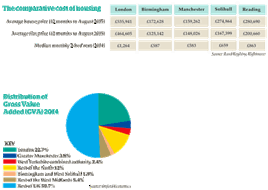 James Hunter Johnston, of NVC Lighting (a Chinese manufacturer), said. “The arrival of HS2 is already bringing about a sense of opportunity in the Midlands. It will bring the region closer to Europe so that it will become a viable location for NVC Lighting’s European headquarters, allowing us to escape the high operational costs in London.”
James Hunter Johnston, of NVC Lighting (a Chinese manufacturer), said. “The arrival of HS2 is already bringing about a sense of opportunity in the Midlands. It will bring the region closer to Europe so that it will become a viable location for NVC Lighting’s European headquarters, allowing us to escape the high operational costs in London.”
Matthew Cheyne, head of sales and marketing at MG Motor UK, said: “Transport links are vital to help businesses grow. Better transportation links will help us drive forward, by improving communications and helping to draw people to the new vibrant city of Birmingham and the fantastic surrounding areas. Success breeds success, and our region being linked to the rest of the UK by HS2 will give MG and Birmingham even greater pulling power for forward-looking, talented people.”
Getting industry to opt in now is important, says Wakeman. “We have concrete evidence of companies moving to the area. We’re getting a lot of noise from people who say they are interested in coming over. It’s clear people recognise the opportunity. We’re looking to work with anybody who wants to move to the region to benefit - not just for the arrival of HS2, because that’s just the catalyst, but also the current economic growth that’s happening here and being sustained.”
Of course, more people means more infrastructure to support them. The LEP has addressed this by including a garden city in the strategy, an idea developed by Solihull Metropolitan Borough Council. Two thousand houses, potentially home to a population of between 4,000 and 5,000 people, will be built close to the HS2 interchange station, on a site covering more than 140 hectares.
The prospectus for this development is also not short on ambition. “Innovative designs including green bridges, connecting neighbourhoods and major infrastructure” are promised, along with green spaces and community energy and heating plans. All of this will be connected into business zones and (of course) the station itself. It also means more schools, shops, leisure activities, and so on.
Says Wakeman: “Solihull has always been keen on addressing the housing shortage in the borough. Everyone accepts there is a need for additional housing. We have to acknowledge there is a housing shortage in this region, and we have to be imaginative in how we look at addressing that, and this could be one such opportunity.”
Returning to the Savills real estate report, it believes Birmingham needs an estimated 89,000 new homes by 2031. At current rates of delivery, it thinks there will be a shortfall of 26,000 when HS2 opens, and so is calling for 4,450 new homes to be built each year. In the year to March 2015, only 1,810 net additional homes were added.
“Increased demand, coupled with an improved local economy and the gradual influx of wealth, both in the shape of London commuters’ salaries and a greater number of higher salaried roles, is expected to drive up house prices over time, particularly at the top end of the market,” says Susan Emmett, director of Savills residential research.
Meanwhile, you can’t ignore the fact that the site chosen for the HS2 interchange station is already a crowded transport hub. On weekdays the M42 and M6 interchange are notoriously busy. At weekends, with several shows on at the National Exhibition Centre, the motorway and Birmingham International station heave with travellers - and that’s before the adjacent airport is considered. This is a truly global aviation hub which this year has had passenger growth of 5%. In 2015 it has handled ten million passengers for the first time in its history. When HS2 switches on, it will be just a shade over 30 minutes from central London, almost comparable with a trip from the capital to Gatwick. The airport’s own study thinks an extra 750,000 passengers will be tempted to use it.
UK interchange seems an apt name for the proposed station. It’s not hard to imagine it becoming the UK’s biggest transport hub. But add in new houses, and business parks, plus a large number of stakeholders whose needs must be accommodated, and surely it begs the question: can it work? How can you design enough capacity for the decades ahead?
It’s a challenge, acknowledges Wakeman: “The site is smack in the middle of one of the most congested parts of the motorway in the Midlands. We’ve been working with Highways England, and part of the strategy is to look at connectivity and constraints on current capacity. We can’t deliver the strategy without looking at connectivity... the NEC and the airport are stakeholders - all of these plans need to work for all of the stakeholders. We’re putting in place a whole programme of infrastructure requirements for the interchange site so we can maximise development potential without current pressures .”
The airport is touted as a key gateway to international markets, but the rail opportunities are not ignored. Birmingham wants its direct trains to Paris and beyond, and the strategy calls for the link between HS2 and HS1 to be built to further enhance the regional economy.
For the city centre station, the LEP and Birmingham City Council have more control over their own destiny. The station design still needs to be finalised with HS2, and how it connects to other modes of transport is key to that process. The Midland Metro tram line is already being extended into the city centre towards Birmingham New Street. Another line is proposed to connect to Curzon Street, with further extensions to other outlying districts to follow.
Pedestrian links are also important - the new station must not act as a physical barrier to other areas of the city, which include a proposed new business zone offering 400,000 square metres of ‘Grade A’ office space and a residential zone with 3,000 homes.
Beyond the costs of building the high-speed line itself, everything proposed in the Midlands Growth Strategy comes with a price tag. Changes to roads… capacity enhancements on the existing rail network, tram and bus corridors… all are required to make sure the connectivity is maximised, and all need substantial investment. Even a new People Mover is being discussed, to tie in the airport to the Interchange station and the NEC.
Meanwhile, elements of the strategy that are not so physically obvious but absolutely essential, such as support for business and up-skilling the workforce, also demand money.
In late November 2015, leaders in the region signed up to a devolution deal that will give the emerging West Midlands Combined Authority (working across the geography of the three Local Enterprise Partnerships) the funding and the powers to focus on precisely these issues - transport, housing and job creation. In total the package is worth around £8bn, spread over 30 years, with £4.4bn committed to delivering the HS2 growth strategy. Has devolution made things easier?
“It makes it easier in as much as they’ve given us provisional agreement to implement our strategy,” considers Wakeman.
“Obviously there are conditions attached to it. The key thing for us is the sequencing of delivery. We have to make sure we do things at the right time at the right speed involving all the necessary stakeholders. That’s crucial. If we get that sequencing wrong we will never get a chance to put it right. So we’re working extremely hard to make sure that everything we’ve identified is done in a logical, structured, ordered manner, aligned to the building programme for HS2. Regardless, our aspirations are we must align with that to maximise value for the taxpayer and maximise opportunity for collaborative working.”
Significant amounts of money will be spent for the next eight to ten years around both the Curzon Street station (£610m) and Interchange station (£672m) sites. The same applies for what is described as the “pre-HS2 phase of the connectivity package” (£1,485m) - starting to tie in the new stations to their environment long before they are built and trains start running.
The best part of a decade on from initial proposals, HS2’s elements are more clearly defined than ever. Phase 1 will now continue to a ‘classic rail’ interchange at Crewe, delivering benefits to the north of England much sooner than originally envisaged. The station in Leeds will also be fully integrated with existing services, rather than standing in isolation. Meanwhile, Stoke-on-Trent has been disappointed not to get a station, and Sheffield would still like one in the city centre rather than at Meadowhall. In any large infrastructure project, it’s inevitable that not every interest can be served. Even in the West Midlands, the benefits have had to be sold repeatedly.
Wakeman concludes: “The issues we have are related to business and residents who are having to relocate. For Birmingham that’s very few in the city centre, but we are dealing with those on a case by case basis, trying to find a solution that takes into account individual needs. For us, the question is how do we win the hearts and minds of the wider population going forward about evidencing the benefits of HS2.”
Is that going to be a tough sell?
“What we have to do is take it down to an individual level and explain to people what it means for them. It’s about jobs in this region. It’s also about the opportunity for new housing, because there will be a need to accommodate people moving. That in itself brings other opportunities in leisure and education. Those are the things we’ve been talking about.
“We need to recognise HS2 does have an impact on some people, for those affected out in the countryside. If we lose sight of the fact we have to consider this on an individual basis, and understand the impact it has on individuals, then we lose the plot a bit.”
Having developed the strategy and secured the funding to deliver it, the Local Enterprise Partnership now has to draw up an implementation plan by spring next year. The timescale is tight, but the fact that the Government has agreed to fund the full amount it bid for has given the team confidence in what they propose. They recognise the unique situation being offered by HS2, and the fact they will be the first area to benefit.
Others would appear to share the view. Mike Steventon, Midlands Regional Chairman at KPMG, says: “The huge investment being put into the region’s infrastructure through HS2 will make it even more attractive for business and inward investment. In fact, we’ve already seen large corporates relocating to Birmingham citing HS2 as a contributing factor.”
With trains still ten years away, that is real long-term planning. The growth strategy is designed to capitalise on that vision, redrawing the map of the area and ensuring promises are delivered.


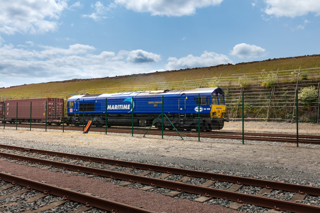
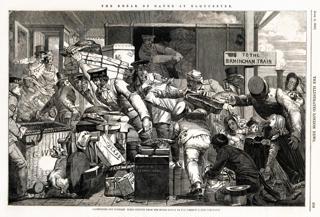
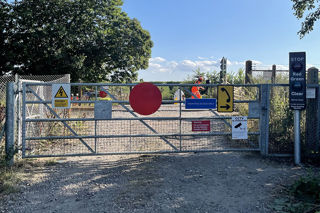
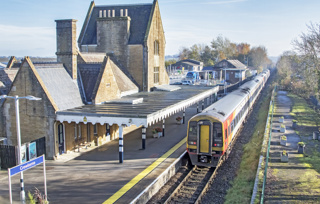
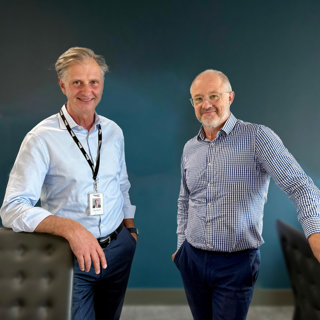

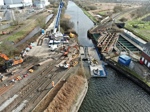









Login to comment
Comments
No comments have been made yet.